Study Methods – The Best Guide To Enhance Learning (Powerful)
Estimated reading time: 13 minutes
This post is all about the best study methods. Discover the best study method tips to enhance your learning!
This post may contain affiliate links, which means I’ll receive a commission if you purchase through my link, at no extra cost to you. Please read full disclosure here.
As an Amazon Affiliate I earn from qualifying purchases.
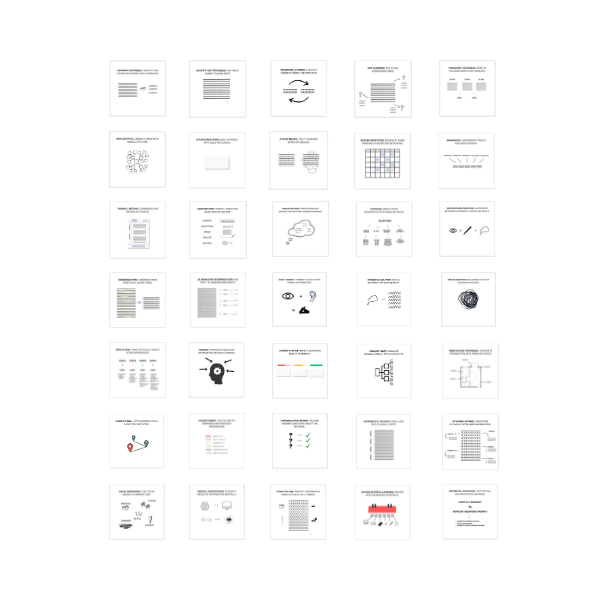
Feynman Technique
The Feynman Technique is a learning method that involves explaining a concept in simple terms as if teaching it to someone else (or yourself).
Teach it like you’re explaining to a 5-year-old.
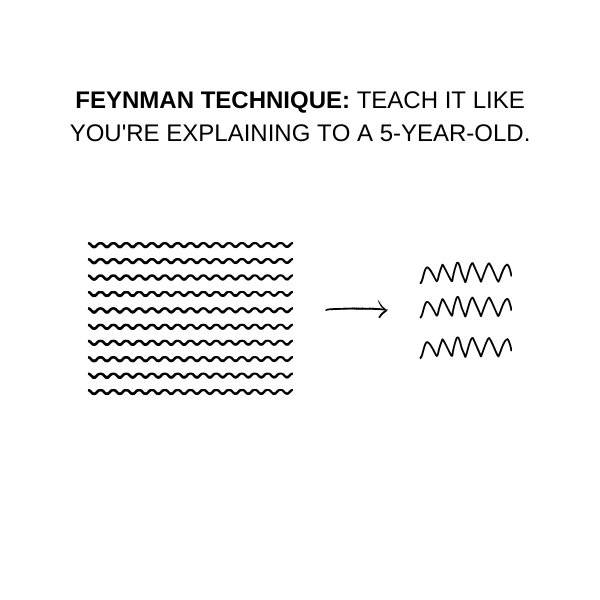
Blurt-It-Out Technique
Blurt-It-Out technique where you quickly express your initial thoughts or ideas without overthinking or filtering them.
Say what comes to mind first.
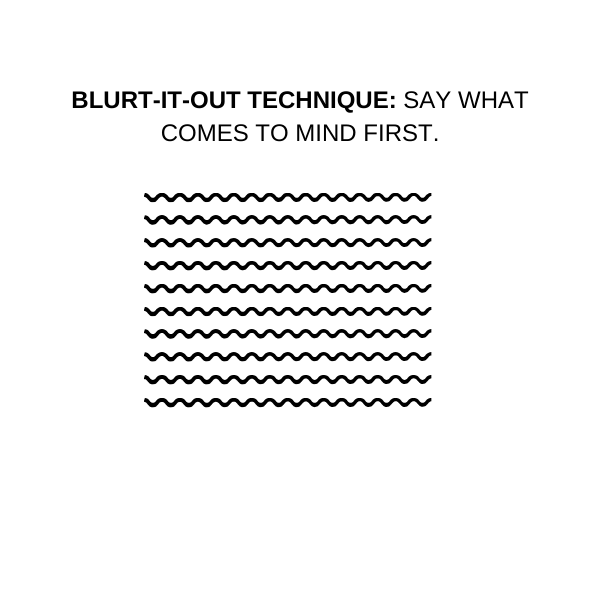
Inversion Learning
Inversion Learning is a learning approach where you focus on understanding the opposite or inverse of a concept or problem to gain deeper insights.
Learn by understanding the opposite.
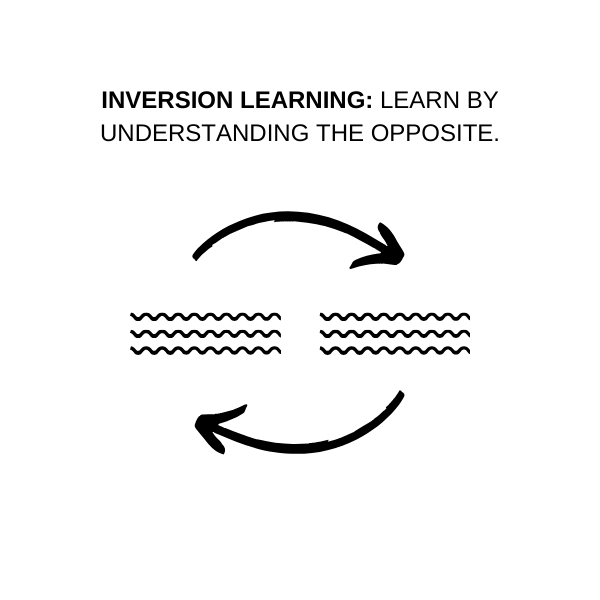
Gap Learning
Gap Learning is a learning method that involves identifying knowledge gaps and specifically targeting those areas for further study and improvement.
Fill in the knowledge gaps.
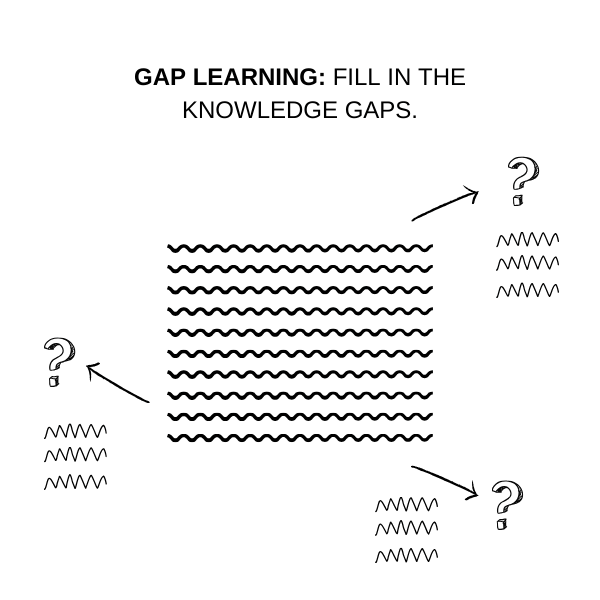
Pomodoro Technique
The Pomodoro Technique is a time management technique that involves working in focused bursts (usually 25 minutes) followed by short breaks to enhance productivity.
Work in focused bursts with breaks.
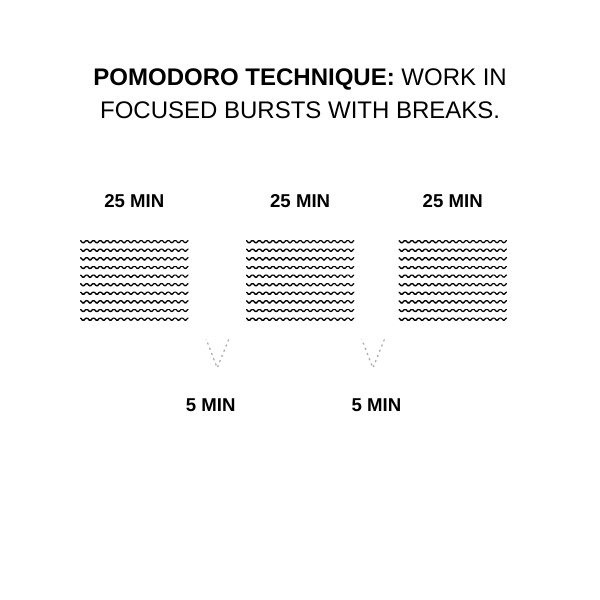
Mind Mapping
Mind Mapping is a visual technique for organizing and connecting ideas, using diagrams or branches to represent relationships between concepts.
Connect ideas with visual diagrams.
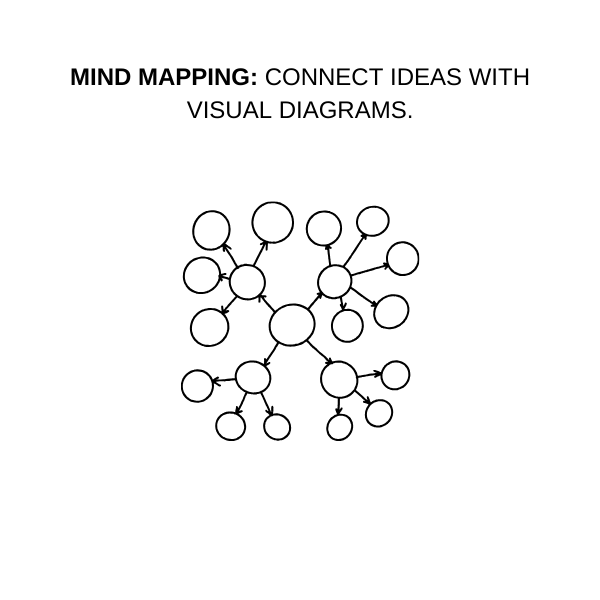
Flashcards (Anki)
Flashcards are cards with a question or term on one side and the corresponding answer or definition on the other and are used for self-quizzing and memorization.
Note: Anki is very popular amongst med school students.
Quiz yourself with question cards.
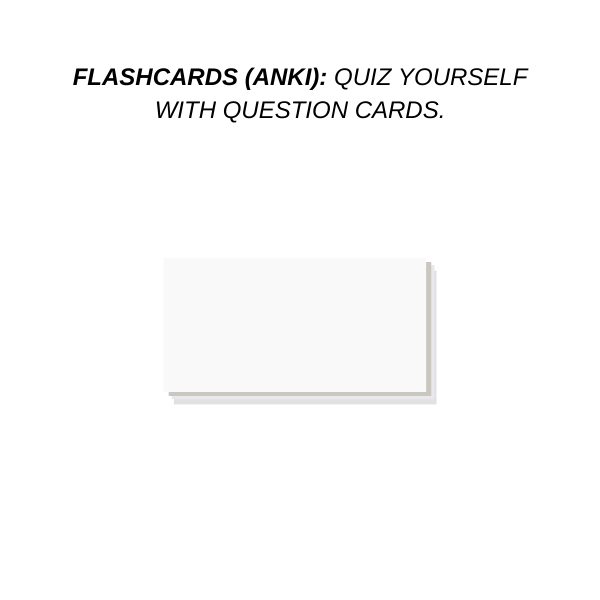
Active Recall
Active Recall is a retrieval practice technique where you actively recall information from memory without looking at external resources.
Test yourself without looking.
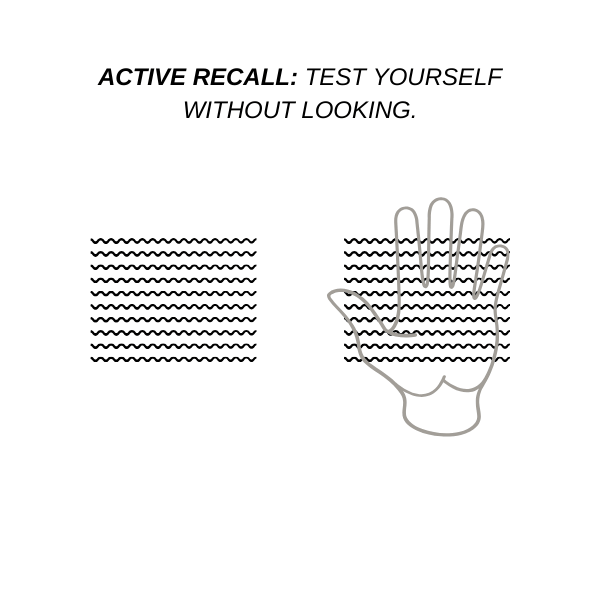
Spaced Repetition
Spaced Repetition is a learning strategy that involves reviewing and reinforcing information at timed intervals to optimize long-term retention.
Review at timed intervals for better retention.
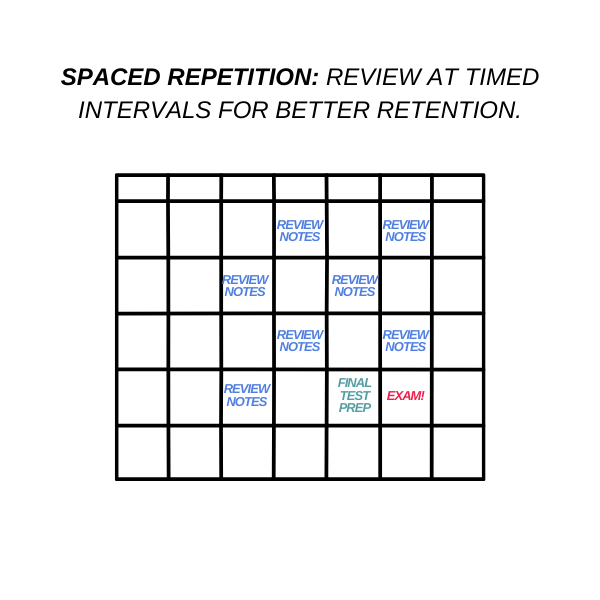
Mnemonics
Mnemonics are memory aids or techniques that help facilitate the recall of information through the use of associations or patterns.
Use memory tricks and associations.
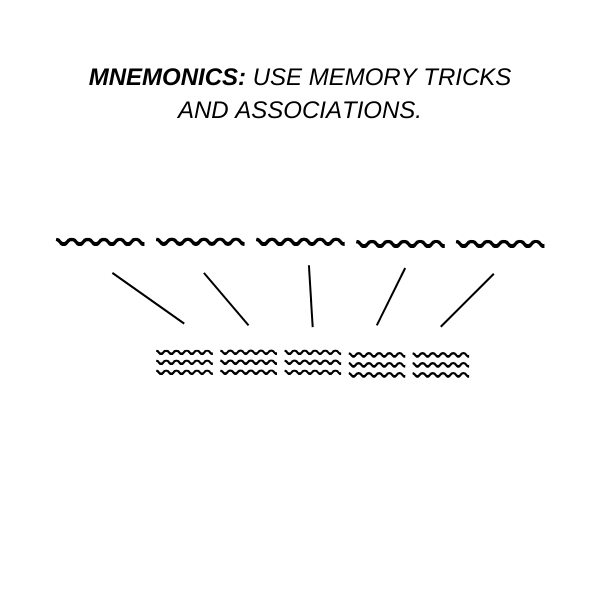
Cornell Method
Cornell Method is a note-taking system that involves dividing your notes into two main sections: one for key points and another for summarizing and reviewing the material.
Summarize and review key points.
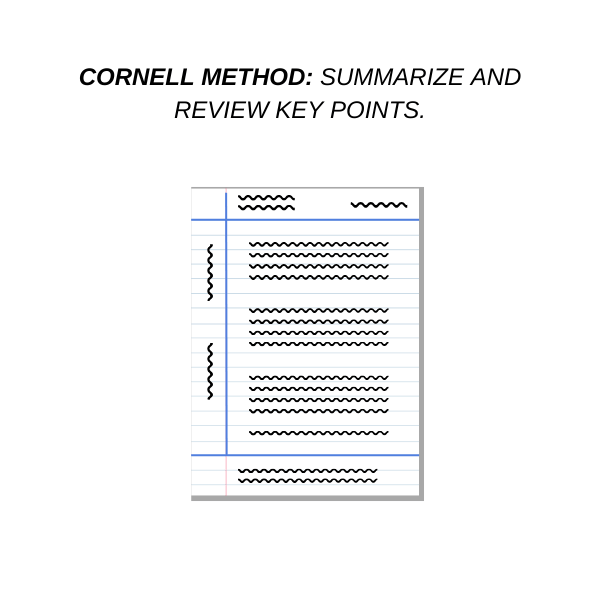
SQ3R Method Study Methods
SQ3R Method is a reading comprehension strategy that stands for Survey, Question, Read, Recite, and Review, designed to enhance understanding and retention of written material.
Survey, question, read, recite, review.
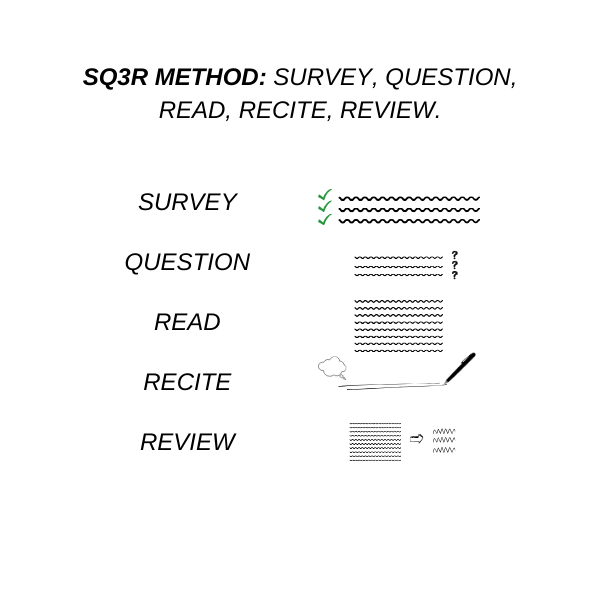
Visualization
Visualization is a technique that involves creating mental images or visual representations to aid in understanding and remembering information.
Create mental images for better understanding.
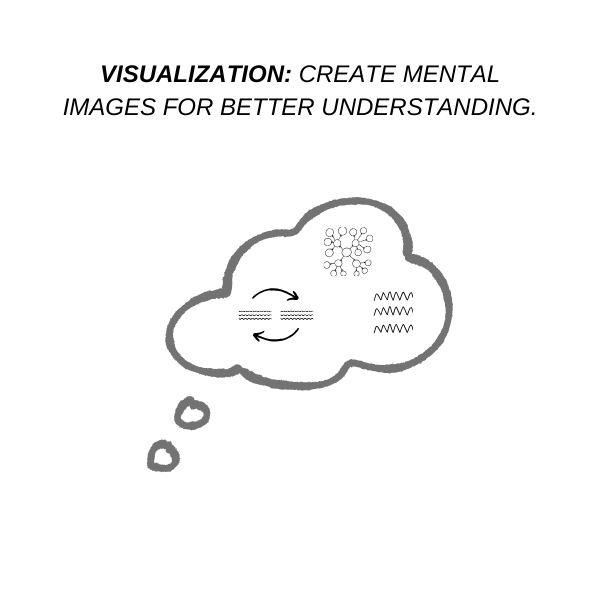
Chunking
Chunking is a technique involving breaking down complex information into smaller, more manageable chunks or groups to improve comprehension and memory.
Break down information into smaller parts.
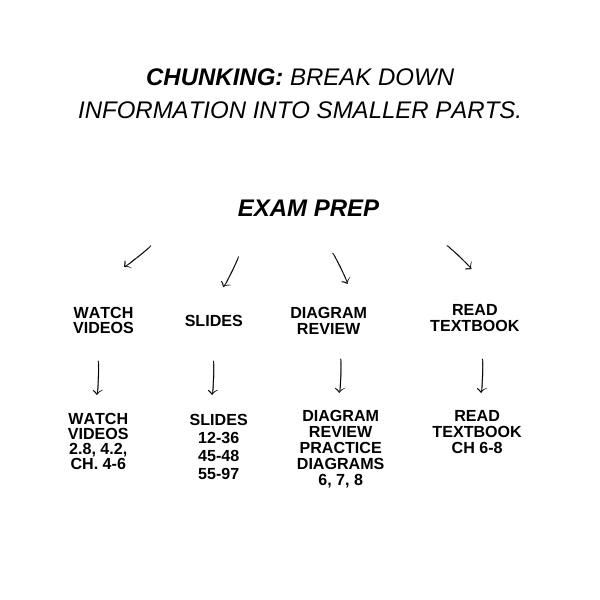
Interleaved Practice
Interleaved Practice is a learning approach that involves alternating between different topics or skills during practice sessions to enhance retention and transfer of knowledge.
Alternate between different topics.
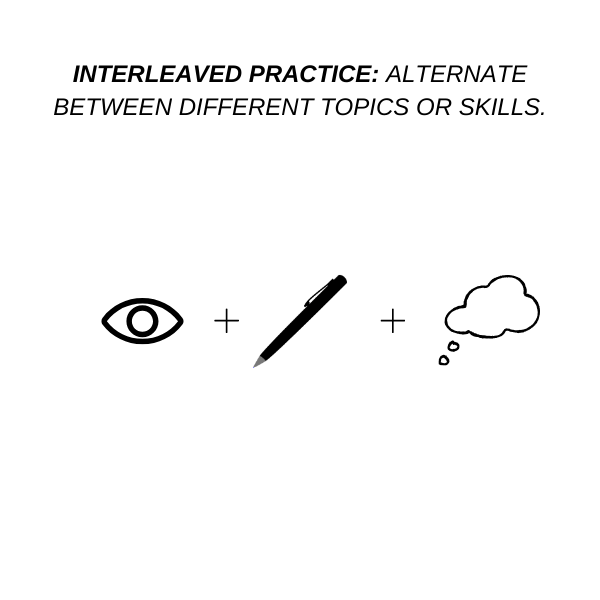
Summarization
Summarization is the act of condensing and capturing the main points or key ideas of a text or lecture in a concise form.
Condense the main points in a short form.
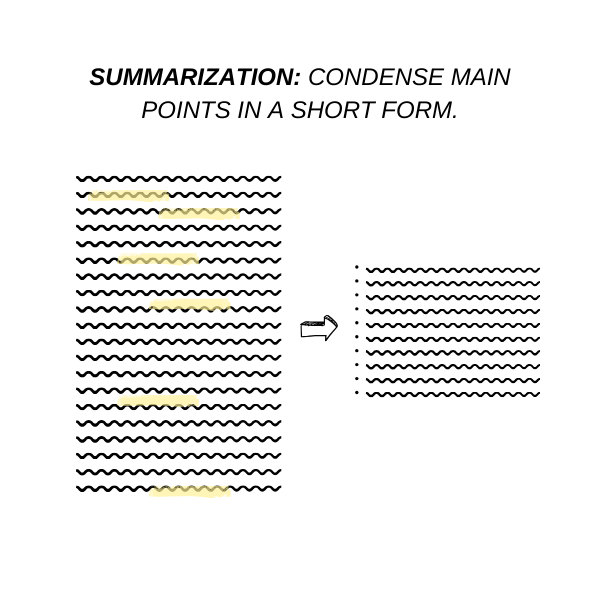
Elaborative Interrogation
Elaborative Interrogation is a learning technique that involves asking yourself “why” questions to explore and understand the underlying connections and reasons behind concepts or facts.
Ask “why” to understand deeply.
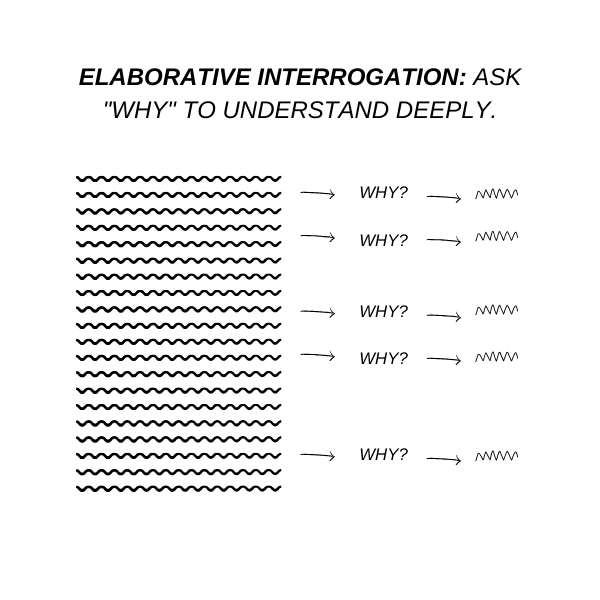
Dual Coding
Dual Coding involves combining verbal and visual information to enhance learning and memory by creating multiple pathways for encoding and retrieval.
Combine visuals with verbal information.

Retrieval Practice
Retrieval Practice involves actively recalling information from memory without the aid of external cues or resources, which has been shown to enhance long-term retention.
Recall information from memory.
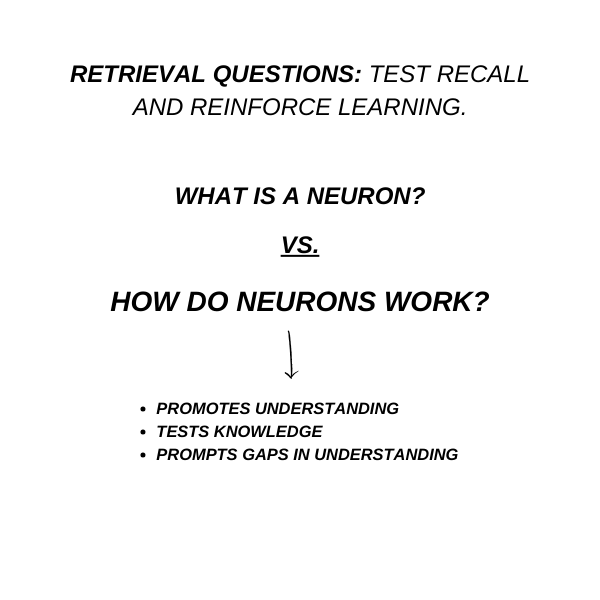
Metacognition
Metacognition is the ability to be aware of and understand one’s own thinking processes, which includes planning, monitoring, and evaluating one’s learning and problem-solving strategies.
Be aware of your thinking process.
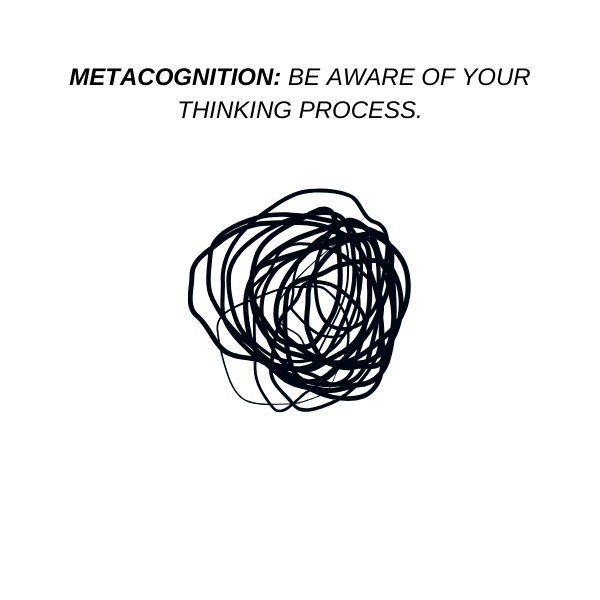
Reflection
Reflection is a process of thinking critically and analytically about one’s own experiences, actions, or knowledge, often leading to insights and deeper understanding.
Think critically about your experiences.
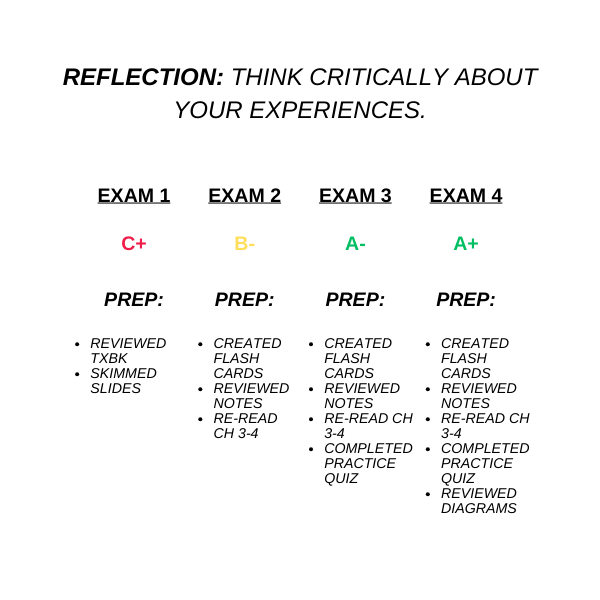
Priming Study Methods
Priming is a technique that involves introducing or exposing learners to relevant information or stimuli before engaging in a learning task to enhance performance or understanding.
Introduce relevant information before learning.
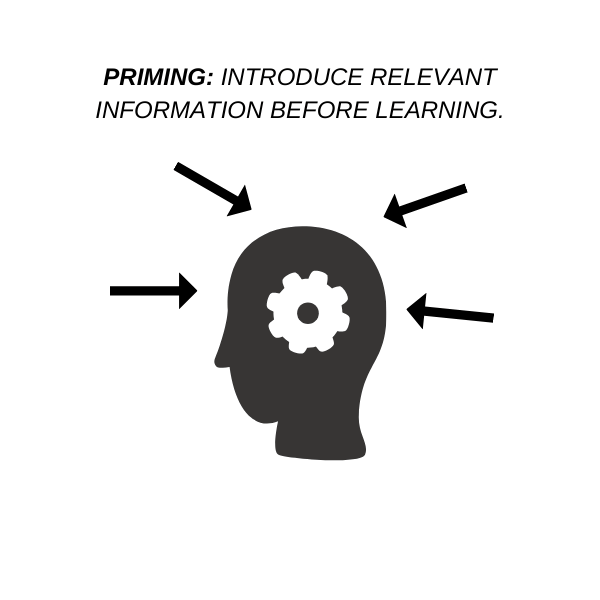
Leitner System
The Leitner System is a flashcard-based spaced repetition system that involves moving flashcards between different boxes or levels based on how well they are remembered.
Move flashcards based on memory.
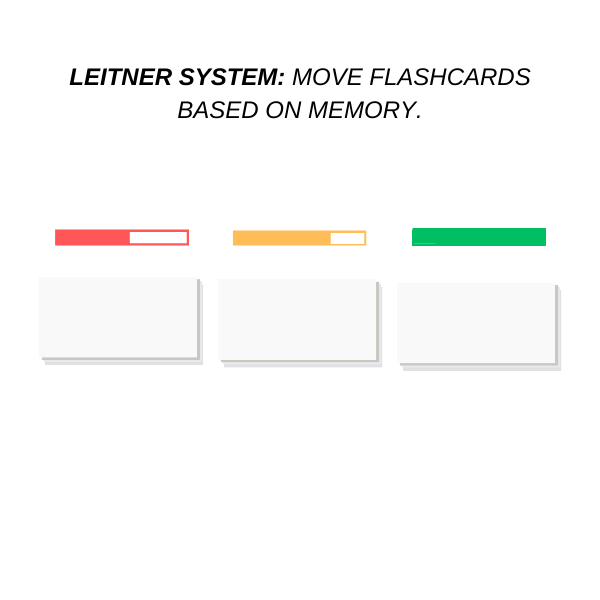
Concept Maps
Concept Maps are visual representations that illustrate the relationships and connections between different concepts or ideas.
Visualize connections between concepts.
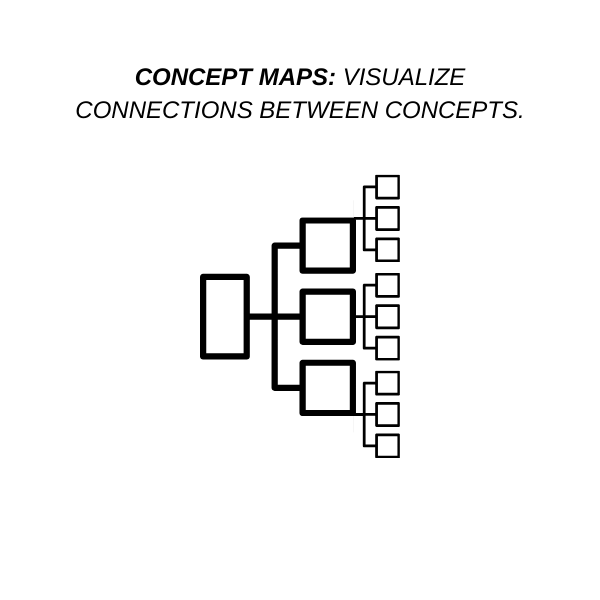
Mind Palace Technique
The Mind Palace Technique is a mnemonic technique that involves associating information with specific locations or places within a familiar environment to aid in recall.
Associate information with familiar places.
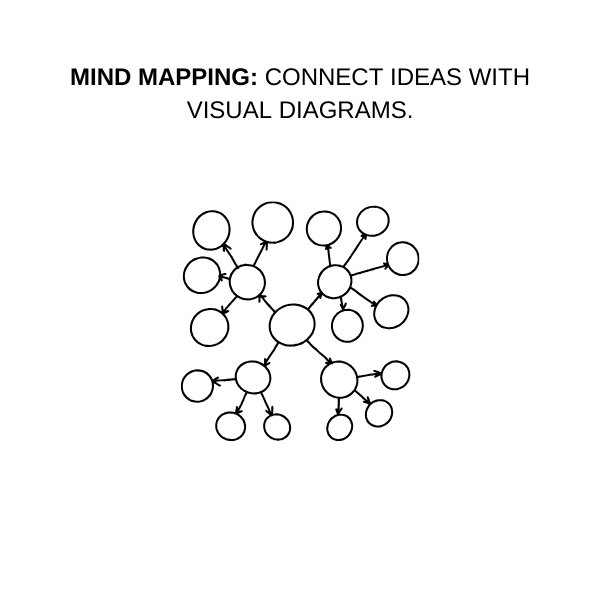
Gamification
Gamification is the act of incorporating game elements, such as points, rewards, and challenges, into learning activities to increase motivation and engagement.
Turn learning into a game with rewards.

Color Coding
Color coding involves using different colors or visual cues to categorize or highlight information, aiding in organization and retrieval.
Use colors to organize and highlight information.
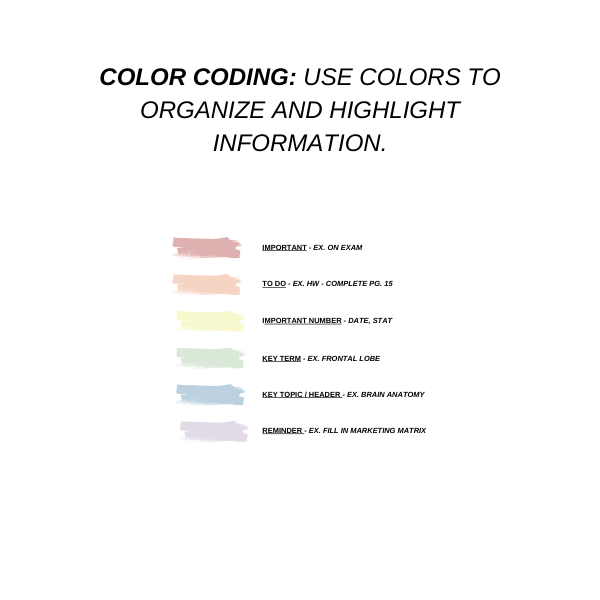
Interrogative Review
Interrogative Review technique that involves asking and answering questions about the material to reinforce learning and identify areas of weakness.
Ask and answer questions about the material.

Incremental Reading
Incremental reading is a technique that involves dividing long texts into smaller parts and reading them incrementally over time.
Read long texts in small parts.
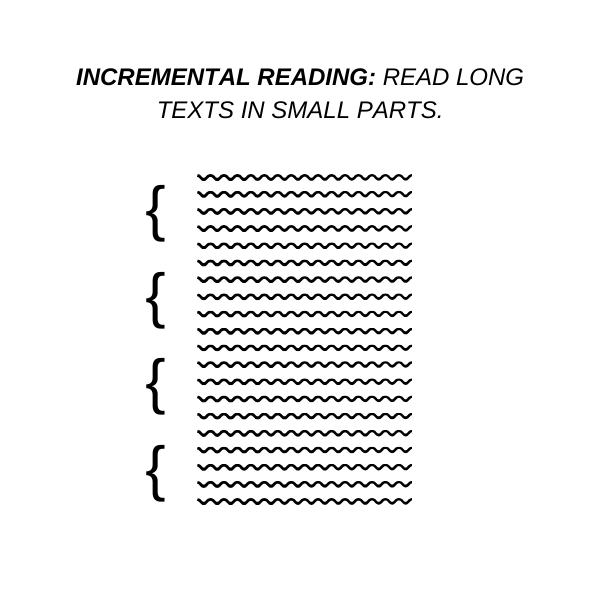
Keyword Method
Keyword Method is a mnemonic strategy that involves associating keywords or vivid mental images with new information to aid in recall.
Associate keywords with new information.
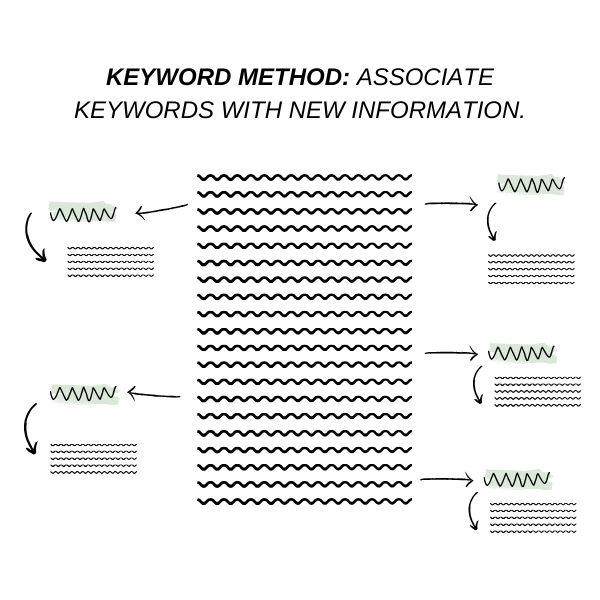
Visual Mnemonics
Visual Mnemonics are visual images or cues that are used as memory aids to facilitate the recall of information.
Use visual images as memory aids.
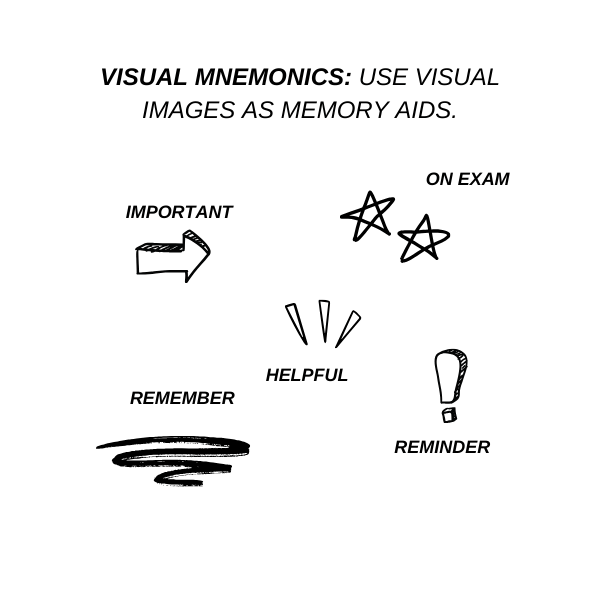
Mental Associations
Mental Associations involve creating mental connections or associations between different pieces of information to enhance memory and retrieval.
Connect pieces of information mentally.
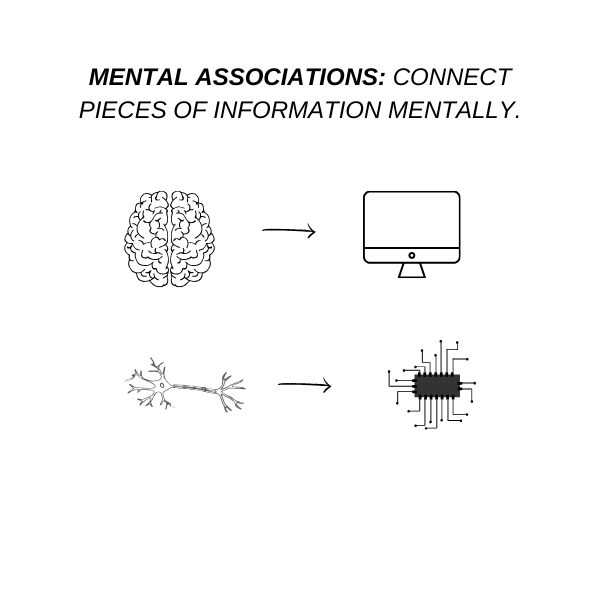
Storytelling Technique
Storytelling Technique involves using narratives or stories to convey and remember information, making it more engaging and relatable.
Convey information through engaging stories.

Spaced Interval Learning Study Methods
Spaced Interval Learning is a learning technique that involves reviewing and revisiting information at gradually increasing intervals over time to reinforce learning and retention.
Review with increasing intervals.
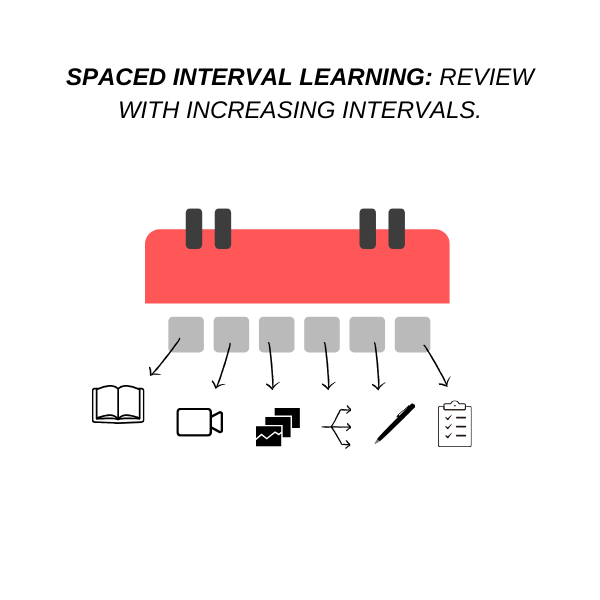
Retrieval Questions
Retrieval Questions are designed to test and recall information from memory, helping to reinforce learning and assess understanding.
Test recall and reinforce learning.
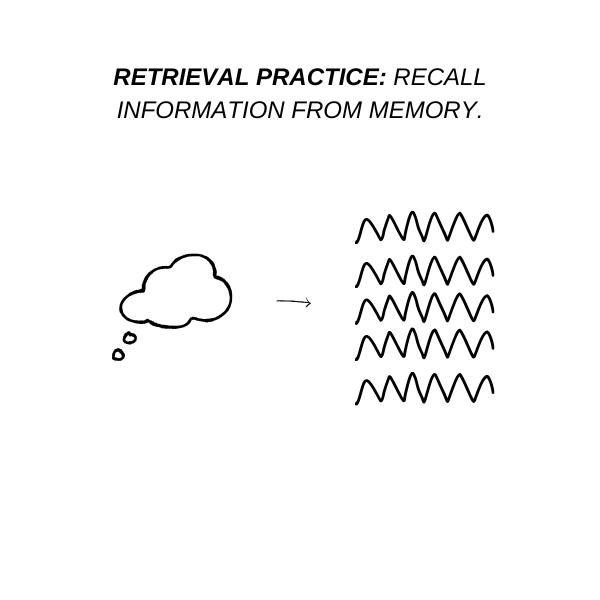
This post was all about exploring the 35 best study methods and tips to enhance your learning, improve retention, and boost productivity.
From the Feynman Technique to active recall, spaced repetition, and visualization, these strategies can help you optimize your study sessions and achieve better results.
Remember, everyone has different learning styles, so it’s important to experiment and find the methods that work best for you.
By incorporating these techniques into your study routine, you can take your learning to the next level and reach your academic goals.
Spa Bathroom Ideas – The Best Luxurious But Affordable Tips
This is the ultimate guide to spa bathroom ideas to make your bathroom look and…
Study Music For Better Focus | The Best Ambient Concentration Music
This is the ultimate guide to finding the best ambient music to help you study….
Valentine’s Day Gifts | Unique Ideas You Might Not Have Considered
This post is the top guide to finding amazing Valentine’s Day gifts that are affordable,…
Valentine’s Day Gifts For Him – The Best Gift Guide (Helpful)
This is the ultimate guide to finding the perfect Valentine’s Day gifts for him! No…
College Resume – How To Write The Best Resume (Template)
This guide is the best way to write a college resume that will help you…
Bridesmaid Box Ideas – The Best Creative Budget Ideas (Unique!)
🤍 These thought-provoking and creative bridesmaid box ideas are the best way to ask your…












